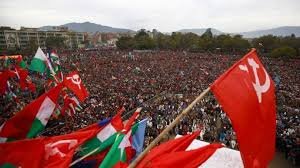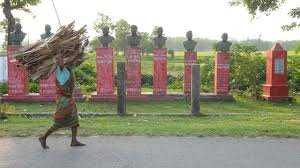
Special Report :Naxalbari – The small village of Naxalbari, nestled in the Darjeeling district of West Bengal, has once again become the epicenter of unrest that has caught the nation’s attention. Known as the birthplace of the Naxalite movement in the late 1960s, this region has a history steeped in conflict. Recent events in Naxalbari have sparked a wave of concern across the state and the nation, as escalating tensions between local communities and state authorities threaten to rekindle old hostilities.
The Origins of the Naxalbari Movement
To understand the current situation, it is essential to revisit the origins of the Naxalbari movement. In 1967, a violent uprising led by a group of radical communists against the state government’s land policies marked the beginning of what would later be known as the Naxalite movement. The movement was driven by deep-seated discontent among the landless peasants who were fighting for their rights to land ownership and against oppressive landlords. The uprising, which started in Naxalbari, soon spread to various parts of India, leading to a decades-long conflict that has resulted in significant loss of life and disruption.

The movement, inspired by Maoist ideology, called for armed revolution to overthrow the state. Over the years, it has evolved, with factions spreading to different parts of India, especially in the tribal regions of central and eastern India. The government has attempted numerous strategies to quell the insurgency, ranging from military action to developmental initiatives. However, the conflict persists, fueled by issues such as land rights, poverty, and social injustice.
Recent Unrest in Naxalbari: A New Wave of Conflict
In recent months, Naxalbari has witnessed a resurgence of tensions, reminiscent of its turbulent past. Reports suggest that the recent unrest was triggered by a land dispute between local tribal communities and a private corporation that had acquired large tracts of land for industrial development. The tribals, who have traditionally depended on the land for their livelihood, have accused the company of illegal land acquisition and encroachment on their ancestral lands.
The situation escalated when local police intervened to enforce a court order in favor of the corporation, leading to clashes between the police and the villagers. Several villagers were injured, and the heavy-handedness of the police has drawn widespread criticism from human rights groups and activists. The incident has reignited fears of a larger conflict, with memories of the Naxalite movement still fresh in the minds of the local population.

Government Response and Political Implications
The state government, led by the Trinamool Congress (TMC), has been quick to respond to the situation, deploying additional security forces to the region and promising an impartial investigation into the land dispute. Chief Minister Mamata Banerjee has called for calm, urging both sides to resolve the issue through dialogue rather than violence. However, the opposition parties have accused the government of failing to protect the rights of the tribal communities and have called for a judicial inquiry into the incident.
The Bharatiya Janata Party (BJP), which has been trying to expand its influence in West Bengal, has seized upon the issue to criticize the TMC government’s handling of the situation. BJP leaders have visited Naxalbari, promising to stand with the tribal communities in their fight for justice. This has added a political dimension to the conflict, with both parties trying to capitalize on the unrest to gain electoral mileage.

Social and Economic Impact on Naxalbari
The ongoing conflict in Naxalbari has had a profound impact on the local economy and social fabric. The region, which primarily relies on agriculture, has seen a decline in productivity as farmers are unable to tend to their fields due to the unrest. Schools and markets in the area have remained closed for several days, disrupting daily life. The fear of further violence has led many families to flee the village, seeking refuge in nearby towns.
Moreover, the incident has exposed the deep-rooted issues of land ownership and the marginalization of tribal communities. Despite several government schemes aimed at uplifting these communities, many tribals in Naxalbari continue to live in poverty, with limited access to education, healthcare, and other basic amenities. The recent events have highlighted the need for a more comprehensive approach to addressing these issues, one that goes beyond mere law enforcement and tackles the underlying causes of discontent.
The Road Ahead: Seeking a Resolution
As Naxalbari stands at a crossroads, the need for a peaceful resolution to the conflict has never been more urgent. Experts and analysts have called for a multi-faceted approach to address the situation, one that includes dialogue between all stakeholders, the protection of tribal rights, and sustainable development initiatives that benefit the local population.

The state government has announced plans to hold a series of meetings with community leaders, activists, and representatives of the corporation involved in the land dispute. There is also talk of setting up a special committee to investigate the claims of illegal land acquisition and to propose a fair settlement. However, the success of these measures will depend on the willingness of all parties to engage in constructive dialogue and to prioritize the welfare of the local communities.
In the meantime, the people of Naxalbari wait anxiously, hoping that history will not repeat itself. The eyes of the nation are on this small village once again, as it navigates through another chapter in its tumultuous history.
Whether the outcome will be one of peace or further conflict remains to be seen, but one thing is clear – the legacy of Naxalbari continues to shape the course of events in this region and beyond.








